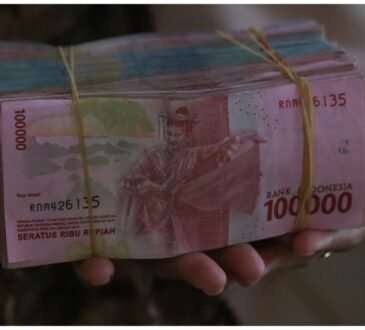The India rupee drops to a record low of 83.88 to the dollar, slipping well below the previous all-time low of 83.845 per dollar. Cues from global equity markets, concerns about recession in US and unwinding of a popular yen carry trade impacted sentiment in the currency market. The signals from the non-deliverbale forwards (NDF) indicate that the currency could potentially slip below 84 to the dollar as well. Given the volatility in the global markets, the possible intervention by the Reserve Bank of India in the non-deliverable forward, local spot and currency futures markets offered some support the currency.
FPI selling weighing on rupee
The rupee’s 1-month realised volatility is at 1.1%, the lowest among major Asian peers. Overseas investors pulled out more than $1 billion from Indian markets on August 5. This also hurt the rupee alongside the yen unwinding. Rahul Kalantri, VP Commodities, Mehta Equities said, “Foreign portfolio investors (FPIs) withdrew Rs 10,073 crore ($1.2 billion) from the markets on Monday, exerting additional pressure on the rupee. The Japanese yen surged to seven-month highs against the dollar as traders aggressively unwound carry trades, driven by economic data from the previous week that heightened the likelihood of a US economic downturn and more substantial rate cuts from the Federal Reserve. The Japanese index experienced its worst day in 37 years. The rupee’s weakness persisted despite a marked drop in the dollar index and a notable decline in crude prices. We have recommended closely monitoring the critical level of 83.70-83.85 for making new positions in the currency pair, with the rupee expected to reach levels of 84.22-84.40 in the coming days.”
Yen carry trade connection
The unwinding of the yen carry trade also has been a big factor in the rupee’s recent weakness. The Bank of Japan increased interest rates to 0.25% on July 31. More importantly, it decided to reduce its monthly purchase of Japanese government bonds (JGBs), halving it to 3 trillion yen ($20 billion) in January-March 2026. The amount will be cut
down by about 400 billion yen each calendar quarter in principle. According to Vinay Paharia, CIO – PGIM India Mutual Fund said, “This decision resulted in an unexpected and a sharp appreciation in Japanese Yen. This is because it became expensive to borrow in
yen and invest outside Japan. In fact incrementally, borrowing in other currencies and investing in liquid Japanese assets may become more profitable. Thus, demand for Yen is likely to rise relative to other currencies, prompting it to strengthen. Also, the hawkish tone of the BoJ Governor meant that the rates could rise further. Yen had also been extremely undervalued on real effective exchange rate basis, prompting a violent normalization.”
Global asset markets have seen significant correction in the last couple of days.








